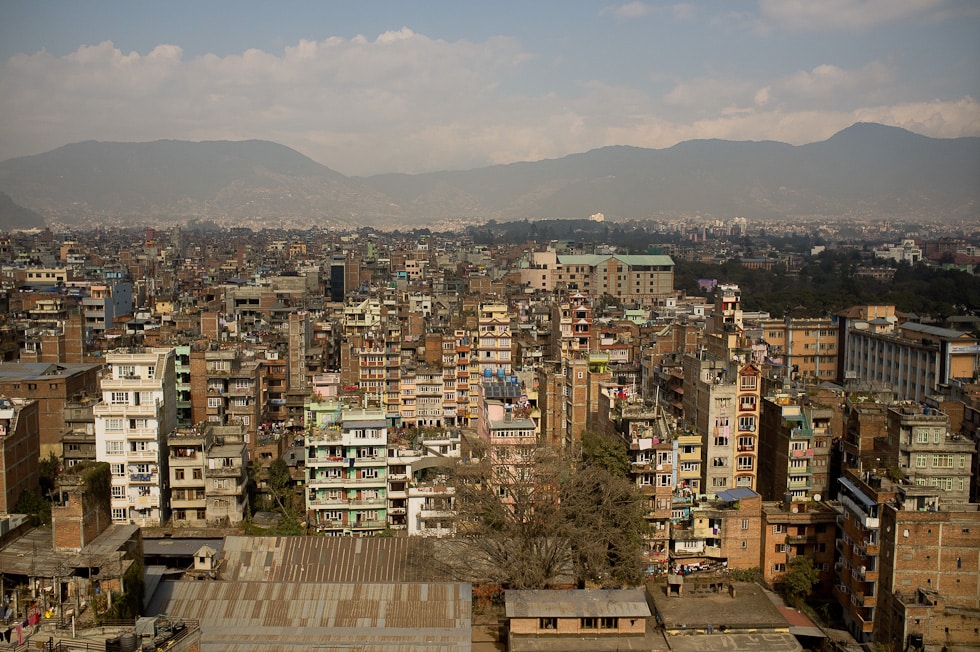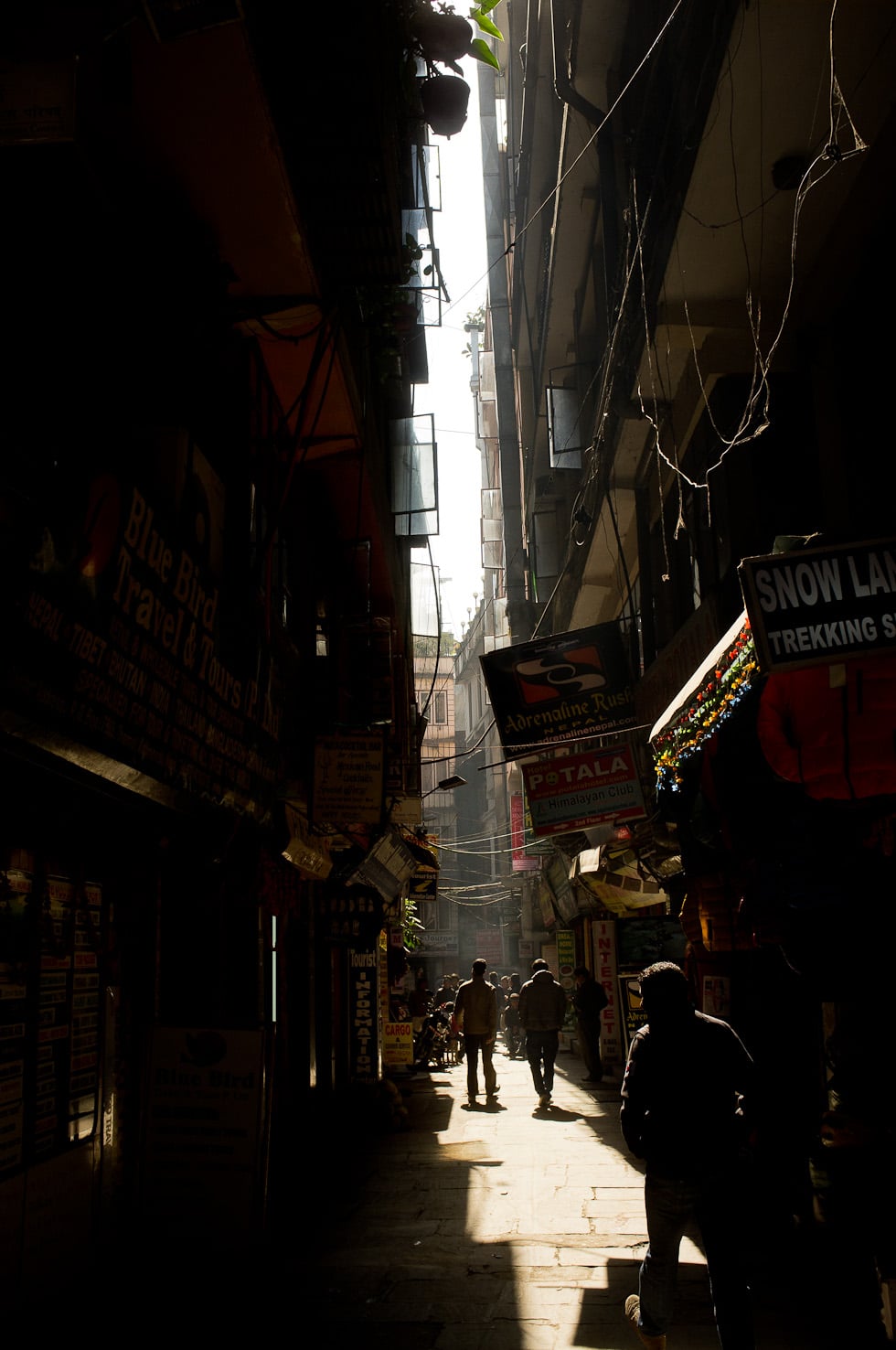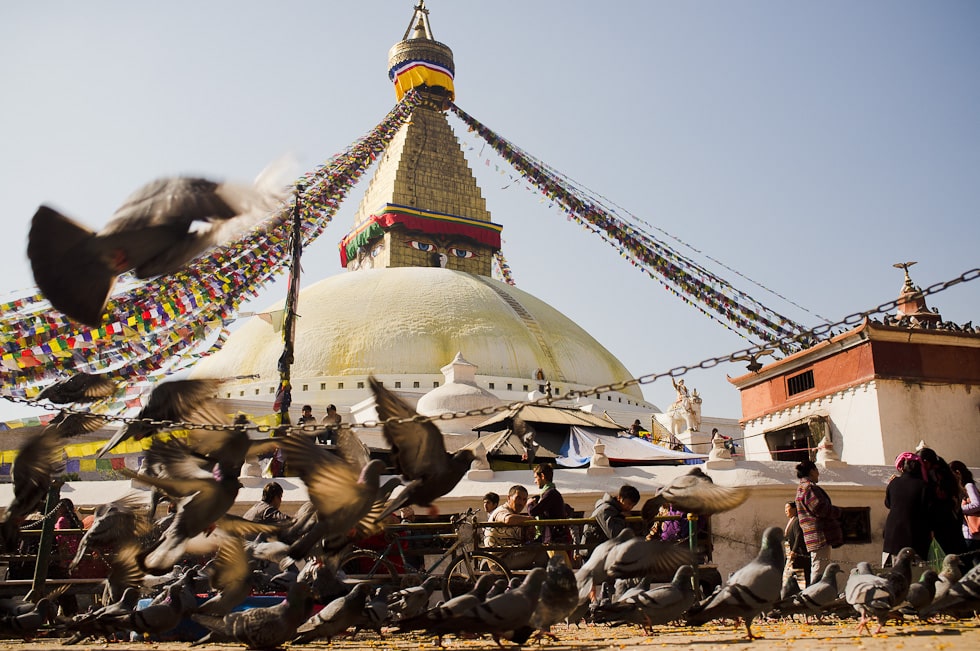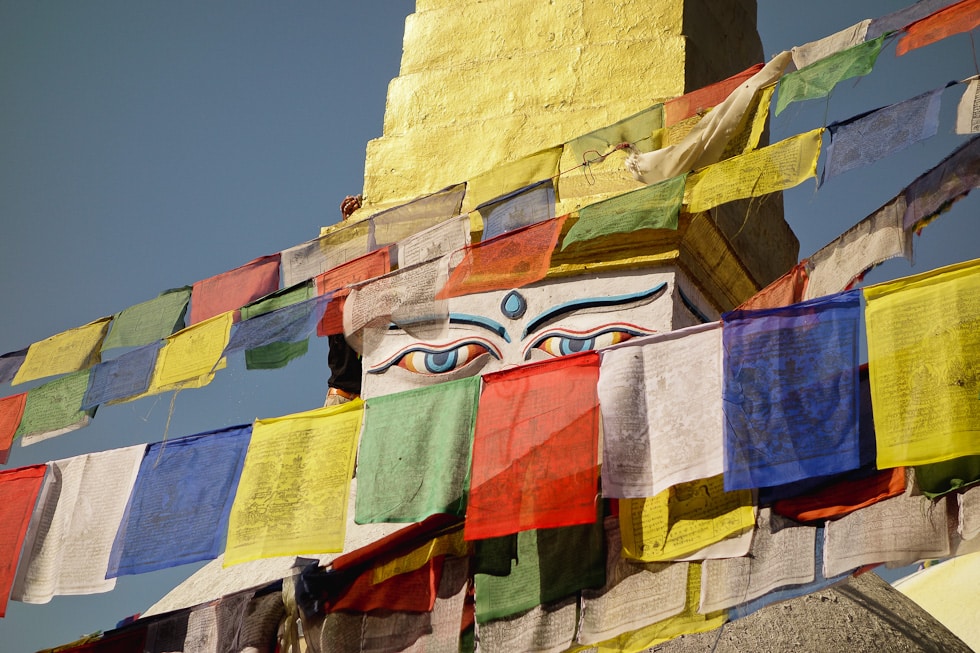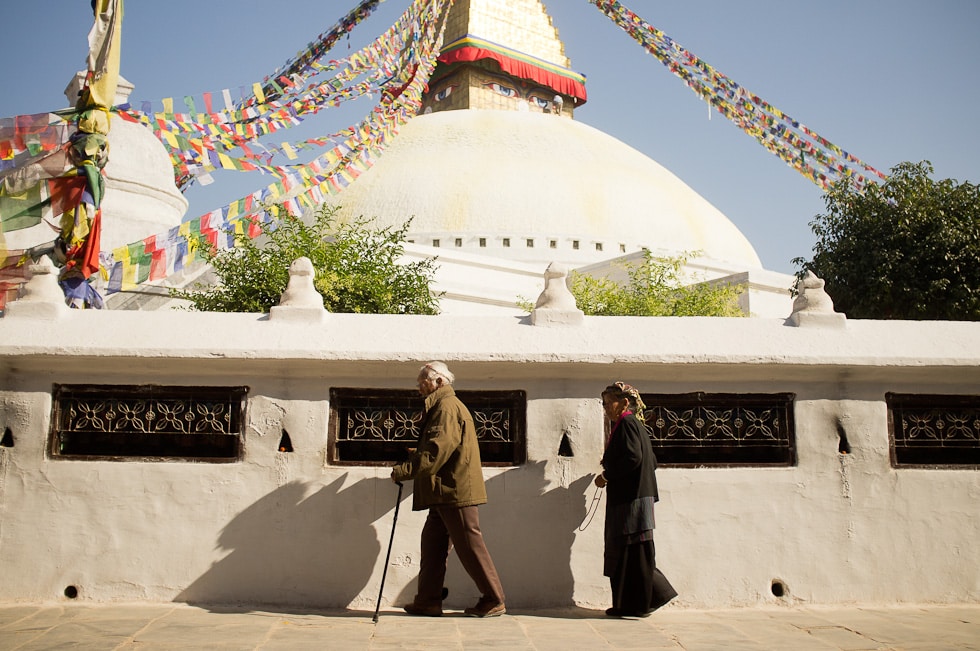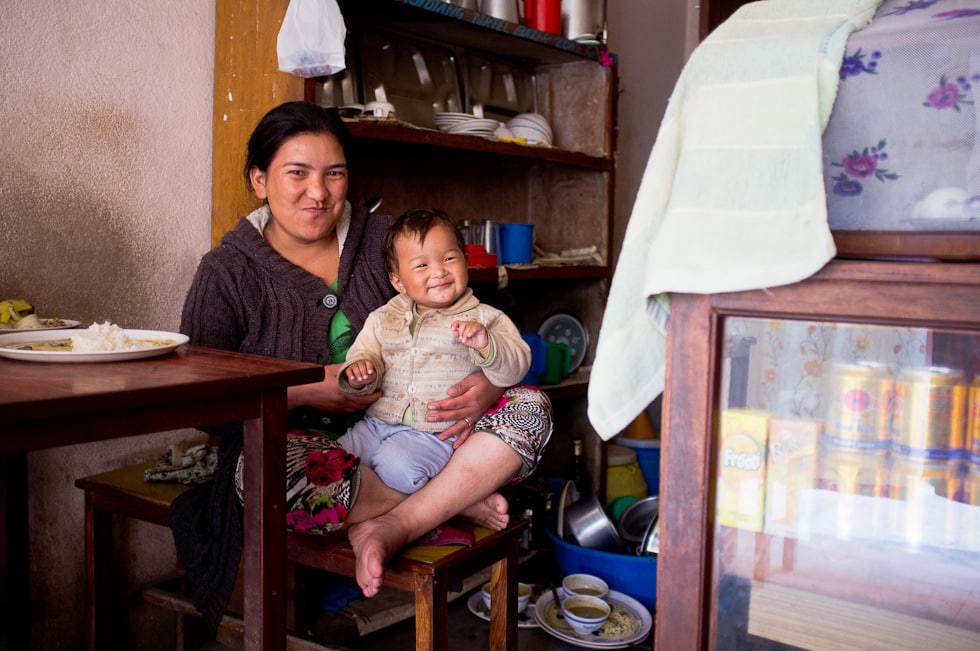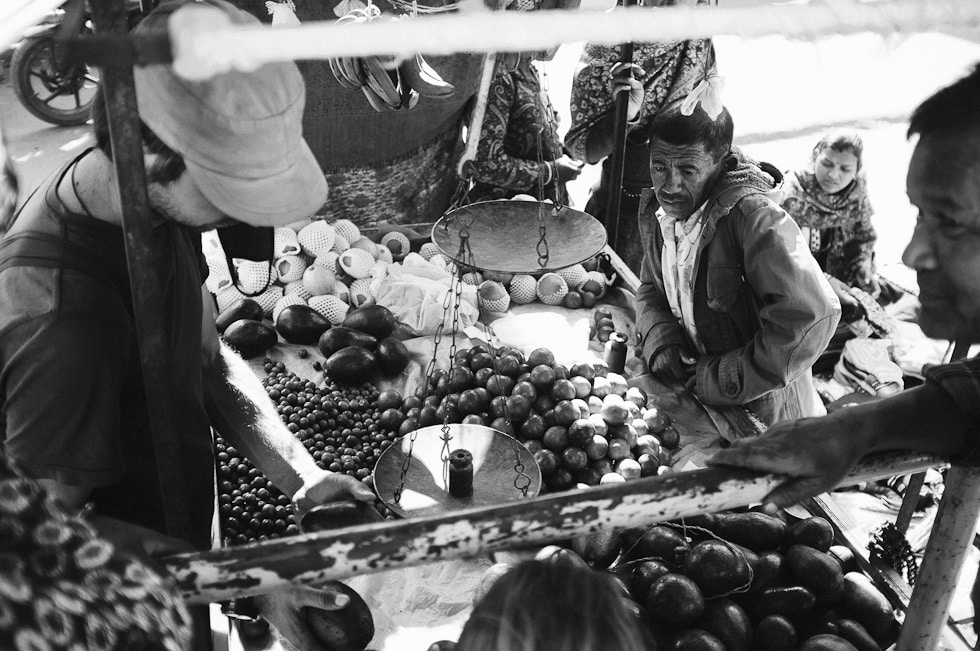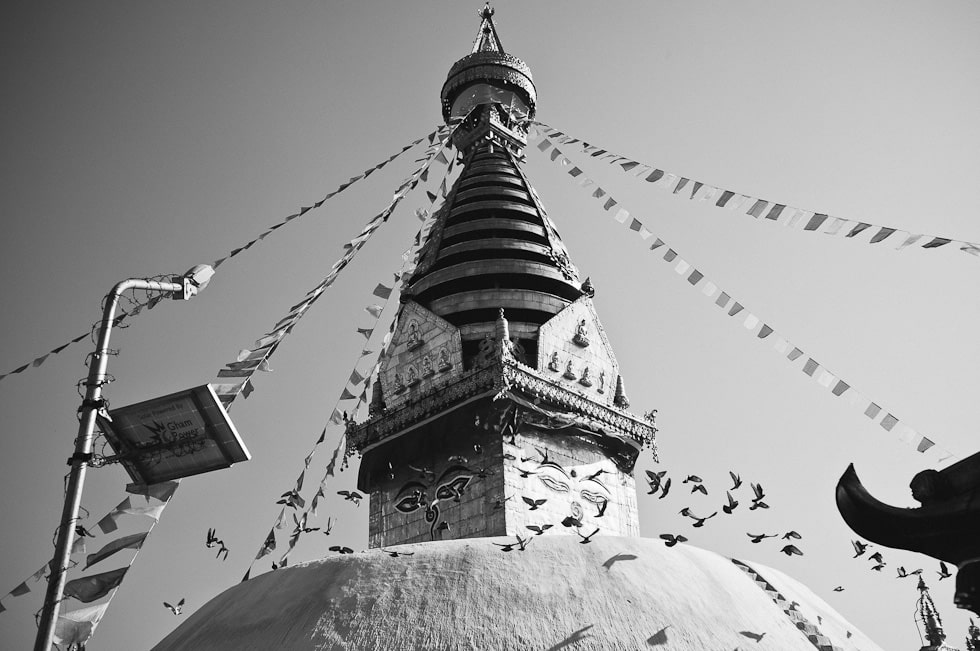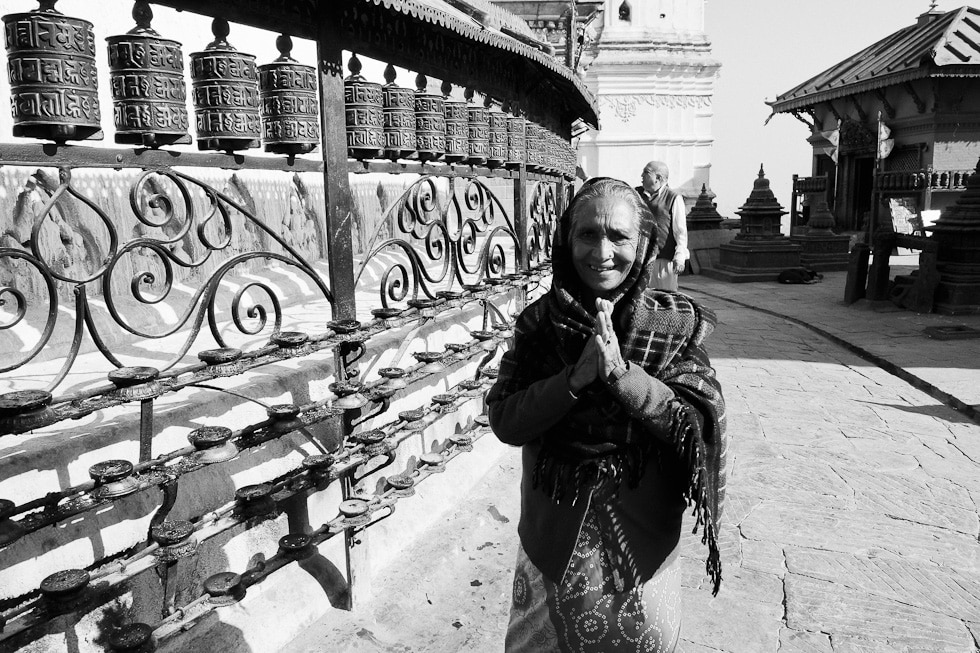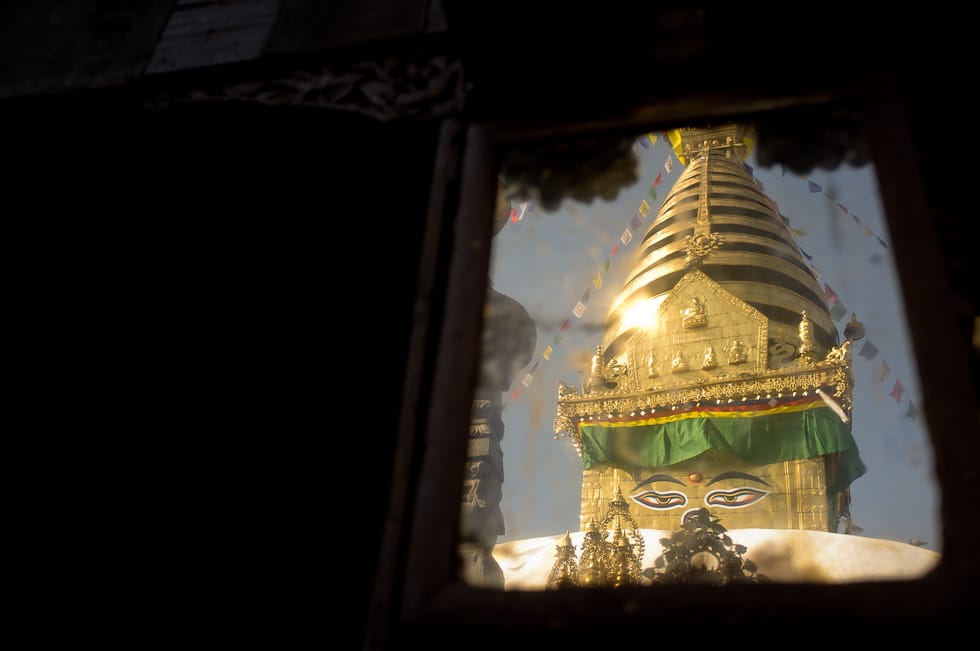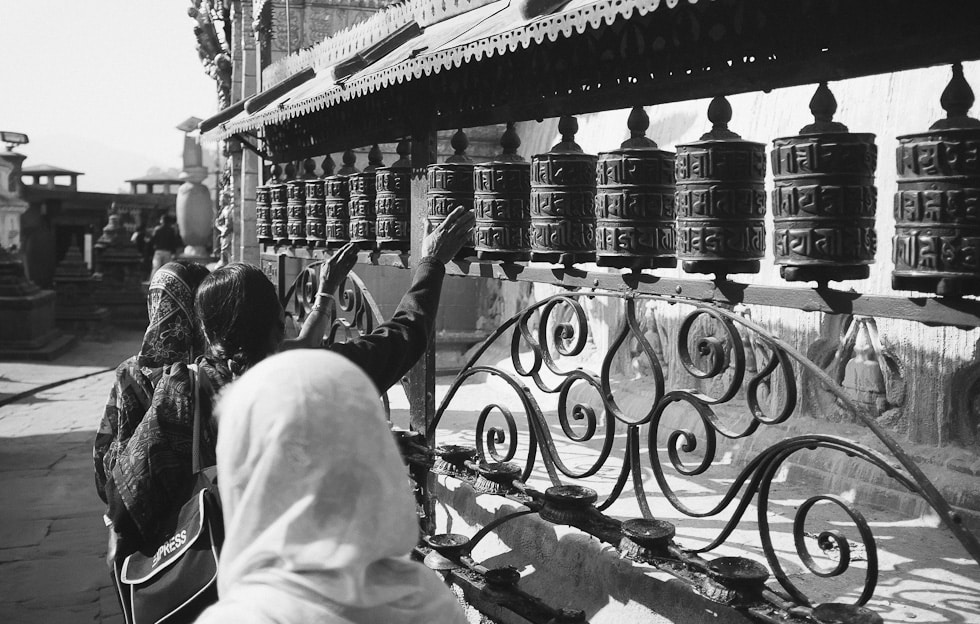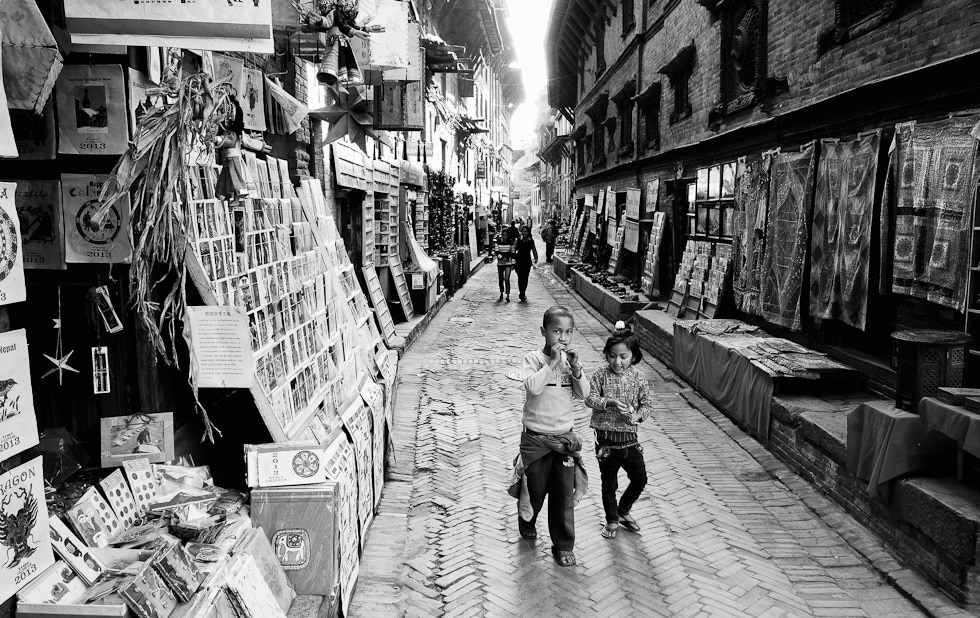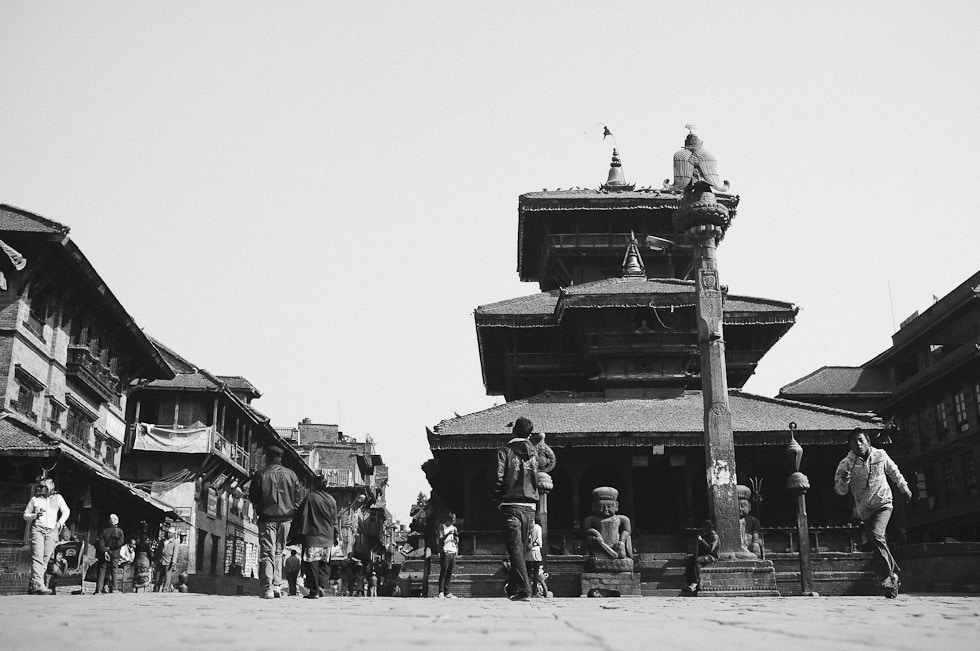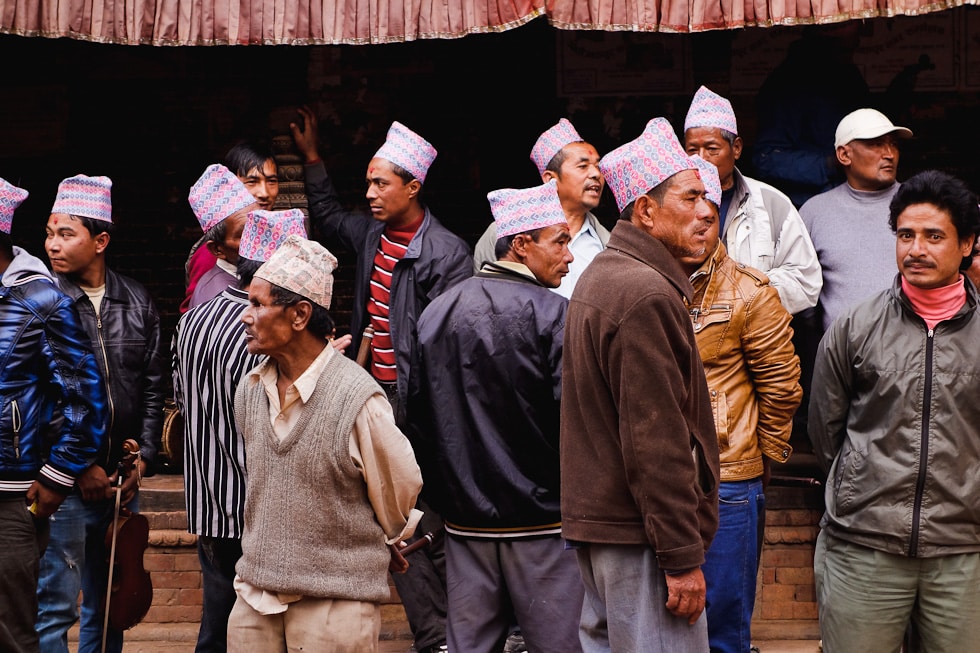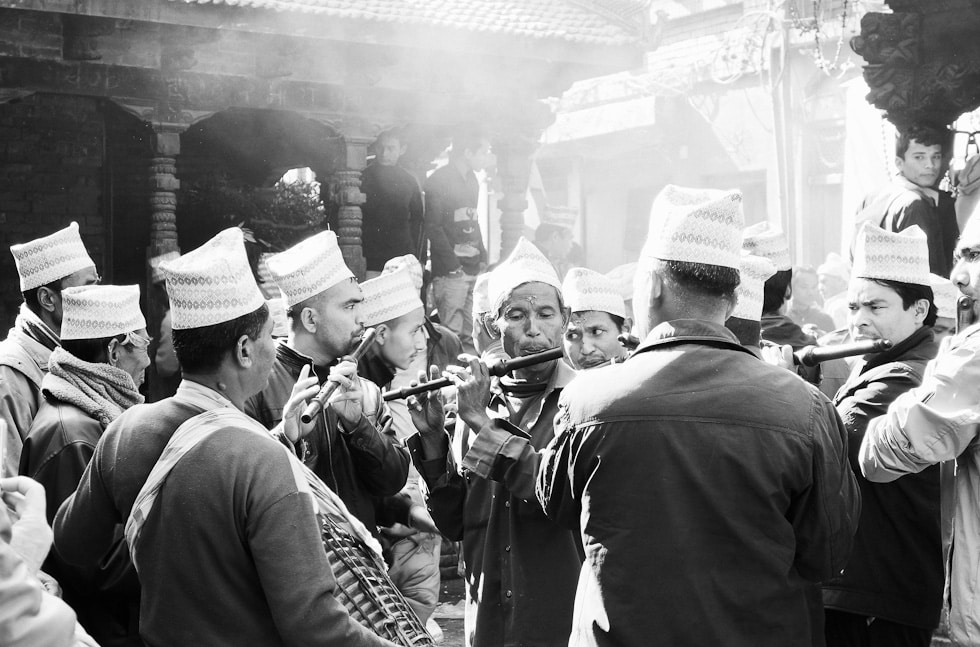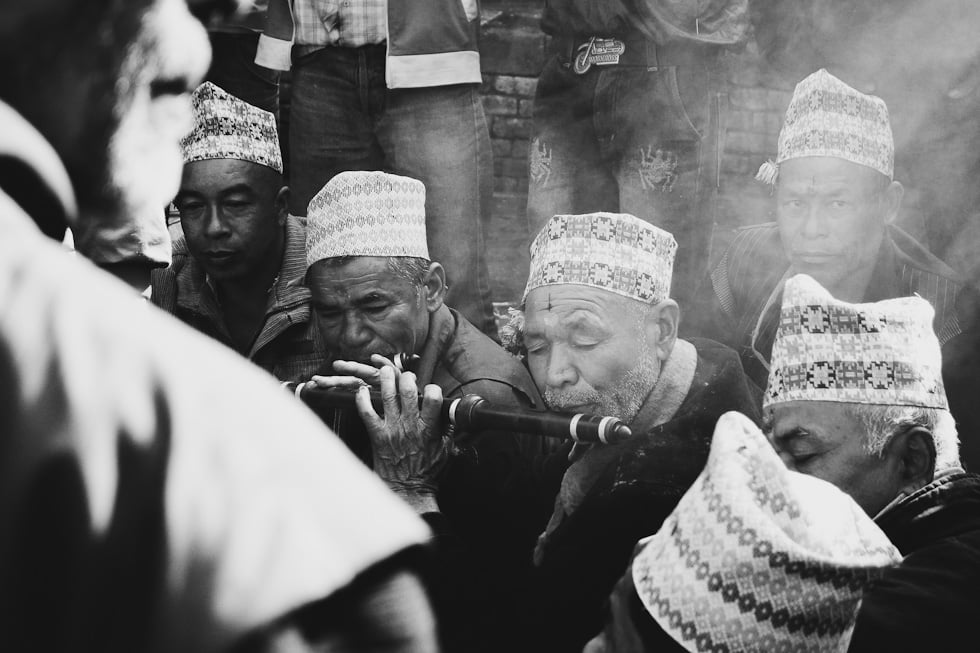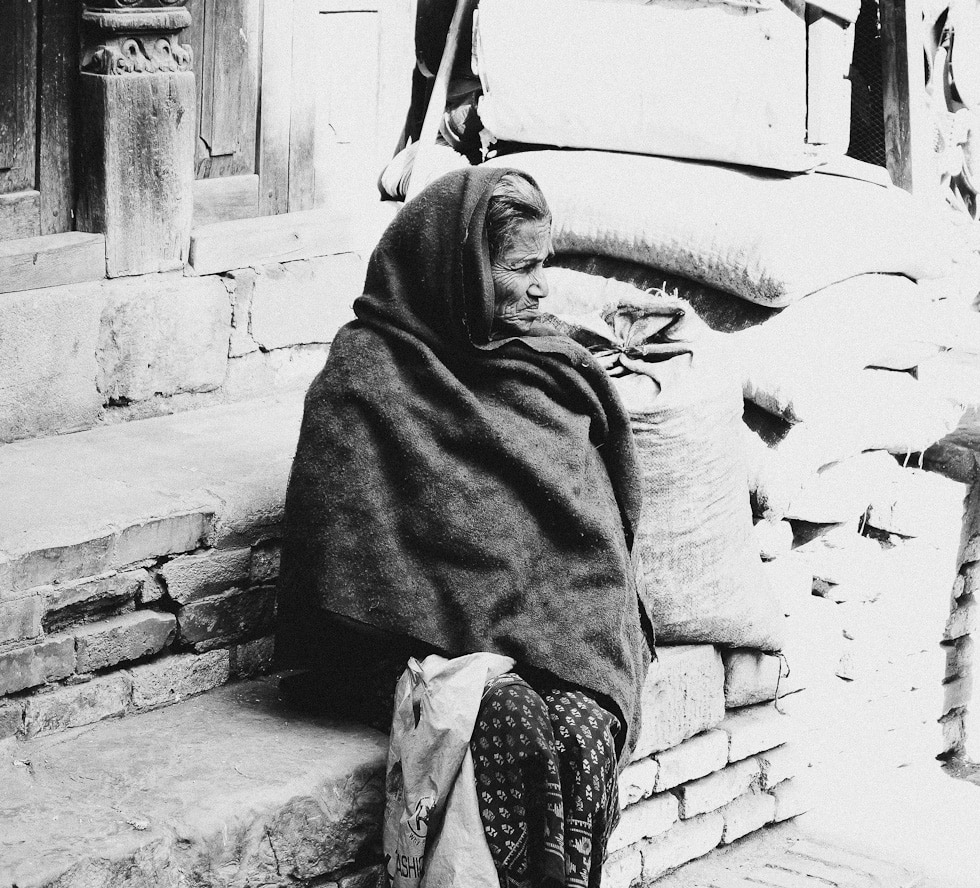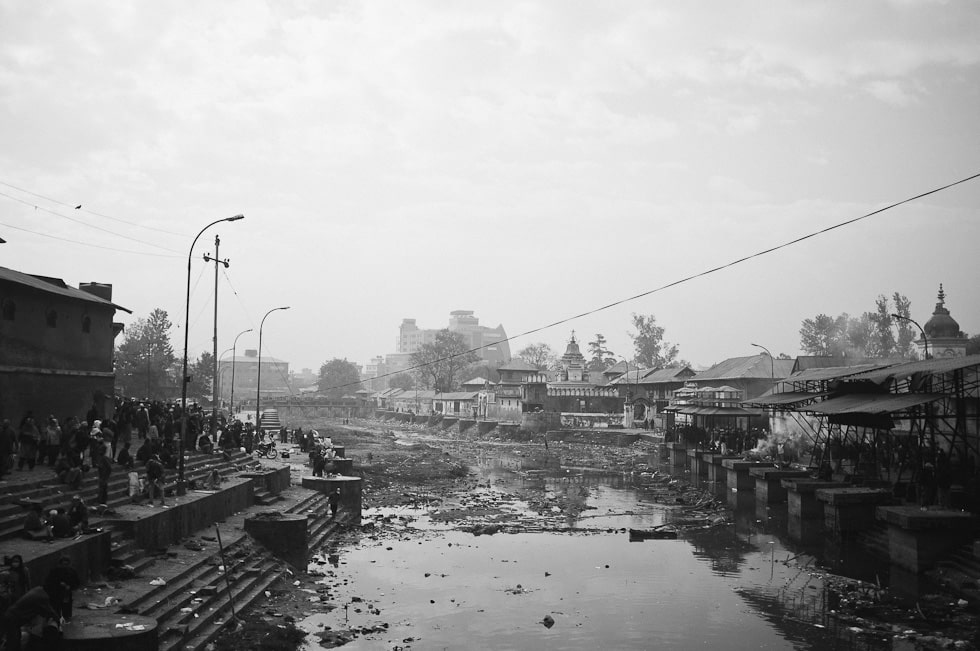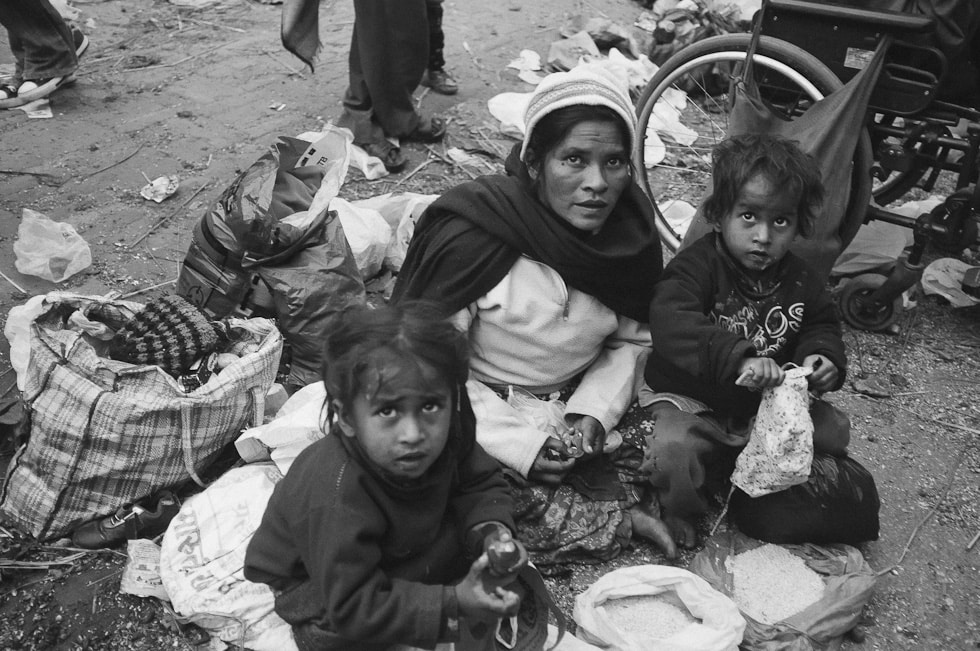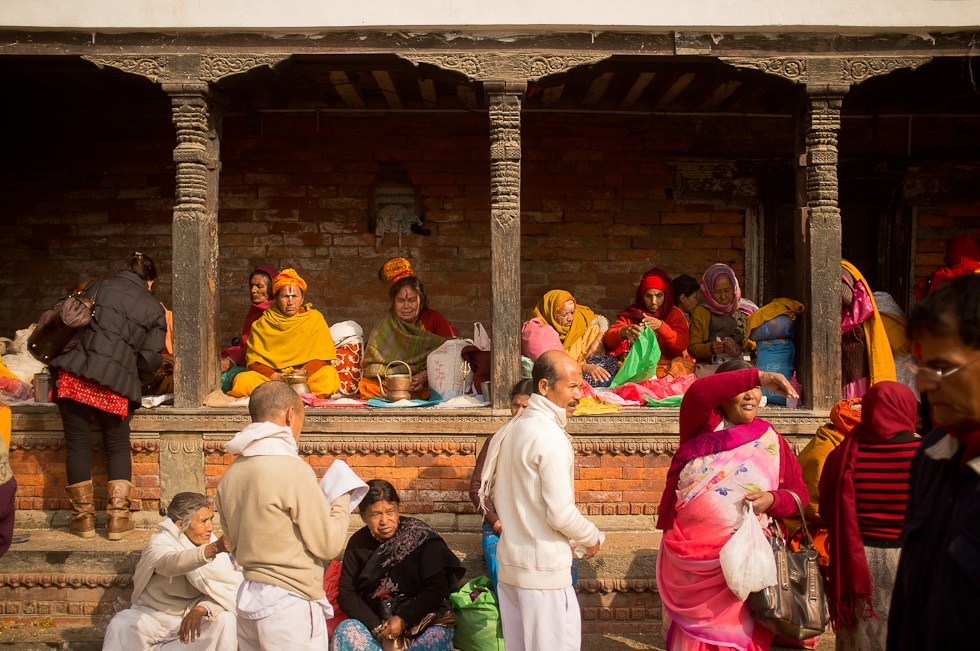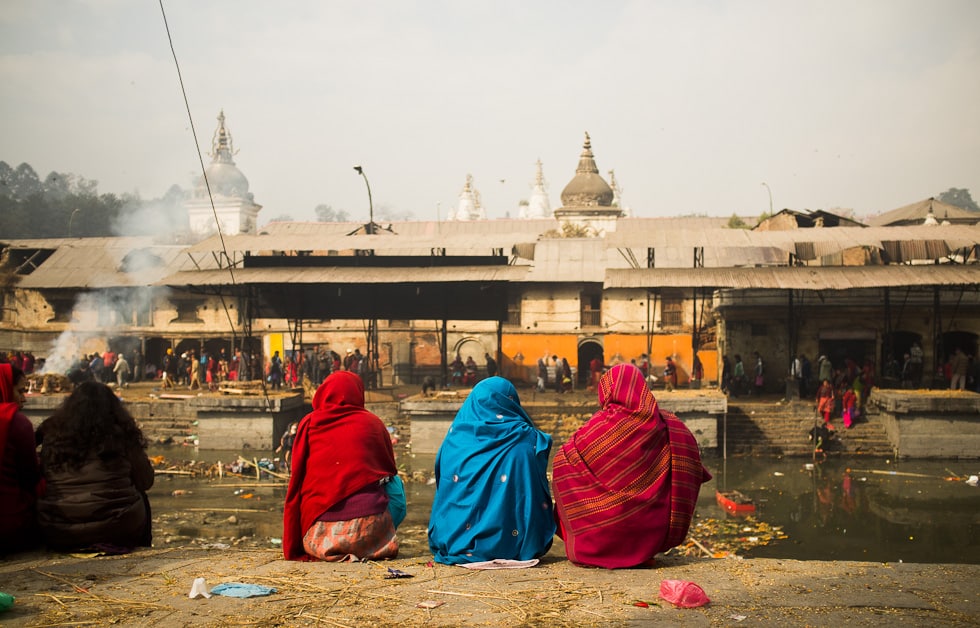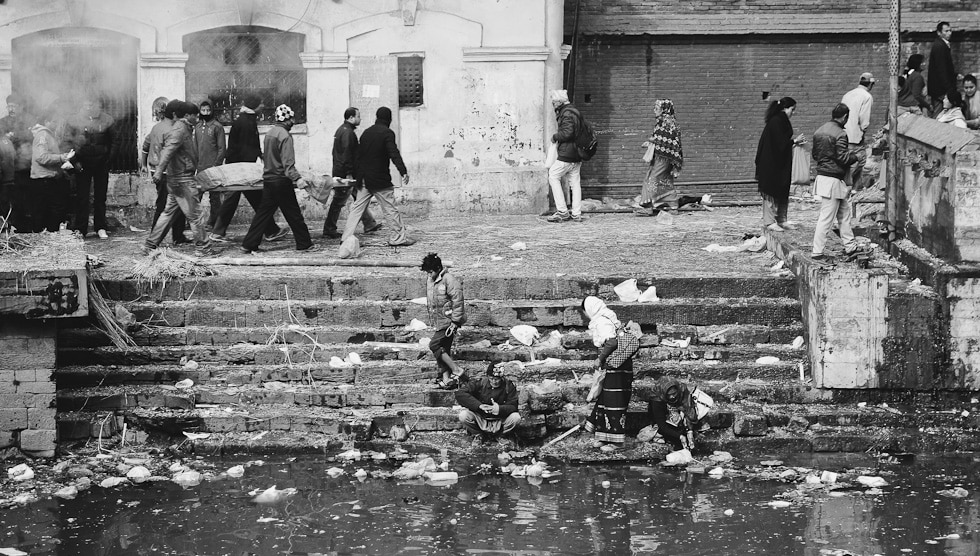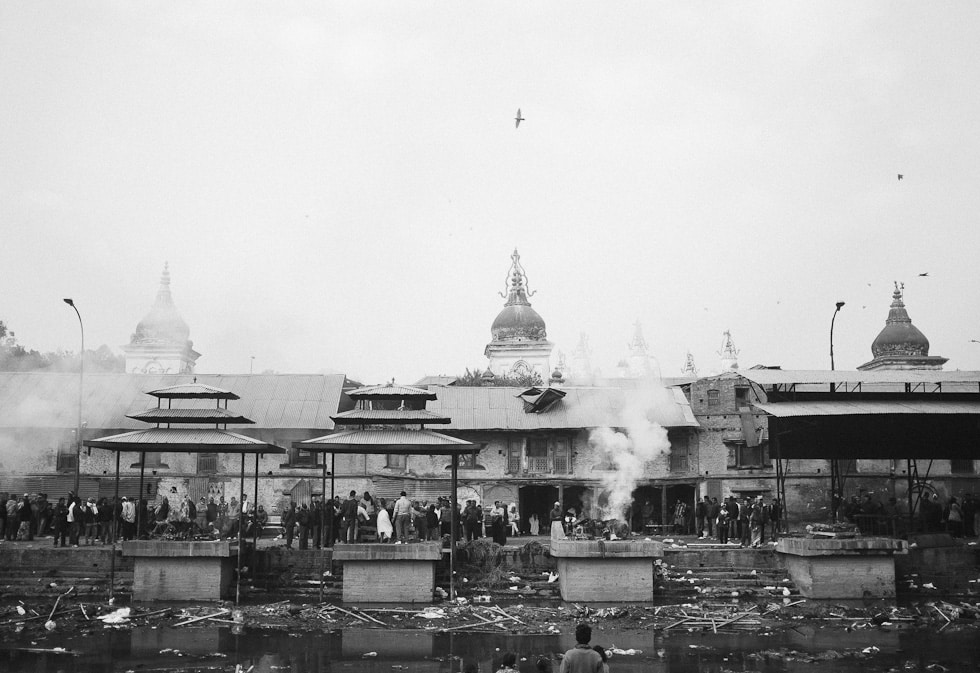Kathmandu Valley is a plethora of cultural and religious gems collected from all corners of Asia. If you’re looking for a place where you can learn the basics of Buddhism and Hinduism, this is the place to be. It’s an amazing combination of the present and the past, which stretches backwards in time uninterrupted for thousands of years.
We spent some time getting “enlightened” during our time in Nepal, and a lot of our cultural lessons came of our our time in Kathmandu. Whether it was visiting the holy Hindu site, Pashupatinath, watching a festival at Bhaktapur or visiting one of the many Buddhist stupas and monasteries; we learned so much about the Nepali people and their cultures. We have some amazing takeaways from our time in Kathmandu- here are just a few of them:
A view from above. Kathmandu extends 360 degrees around us where this picture was taken.
The streets of the “tourist ghetto” Thamel where we stayed during our time in Kathmandu
Boudha Stupa — One of the largest spherical Stupas in modern world. We were able to spend a few hours here with Nima giving us a mini tour as we walked around the Stupa (to the left of course). You are even allowed to climb up on parts of the Stupa.
Prayer flags surrounding the “Eyes of Buddha…or…Wisdom Eyes”. Traditionally prayer flags comes in sets of five: blue for the sky and space, white for air and wind, red for fire, green for water and yellow for earth. They have the Buddhist mantra printed on them, and in the center of each flag is the strong horse and the three flaming jewels that represent the Buddha, Dharma and Sangha. Prayer flags are typically hung to promote peace, compassion, strength and wisdom.
And elderly man and woman spinning the prayer wheels: traditionally the Buddhist prayer wheel has the mantra “Om Mani Padme Hum” written in Sanskrit on the outside and spinning the wheel has the same effect as saying the mantra aloud. It is the physical manifestation of Dharma. When spun clockwise, the prayer wheel helps bring the meditating person closer to enlightenment.
Nima’s FAMILY!!! Actually only his sister and her youngest kid! We stopped by one day during our visits to all the Stupas to have some home made dhal bat. She owns a “local” restaurant. Basically she serves to local people in the community in an area that does not see any tourists.
Using the traditional scales to weight and price the fruit on the street.
Swayambunath Stupa, better known to tourists as the “Monkey Temple”. Interesting to see both old and new mixed in this photo….notice the solar panel for the light…?
Local woman at the Monkey Temple. Her hands are together and she is saying “Namaste” to us which is the traditional greeting and sign of respect. The prayer wheels often circle important Stupas like this one. People walk around meditating while spinning the wheels.
Monkey Temple Reflection? Yes we have that! Buddha Eyes again!
Notice the Express bag…? Have to love modernity.
Children in an alley of the art District of Bhaktapur
Bhaktapur means “the city of devotees.” It is the home of traditional art and architecture, historical monuments and craft works, magnificent windows, pottery and weaving industries, excellent temples, beautiful ponds, rich local customs, culture, religion, festivals, musical mystic and so on. This square and temple was near the restaurant we had lunch at during our visit. It is not considered the “main” temple complex of Bhaktapur but was beautiful none the less.
Local Newari men preparing for a festival and wearing their traditional hats, the dhaka topi.
The festival is in full swing! The men and women danced, played flutes, drums, and other instruments. The festival was for the rededication of a small local shrine or temple in Bhaktapur. Many people gathered and their was music, food, blessings, and also ritual animal sacrifices. At this particular festival a few roosters, a sheep, a goat, and a water buffalo were sacrificed. It is part of the temple blessing to squirt the blood of the sacrificed animal onto the temple. Yes we do have pictures of that but felt they would perhaps not be to appropriate for a wedding photography blog!
More Newari men playing the flutes.
A local woman sits and watches the festival from the comfort of the shade.
The Bagmati River, which runs next to Pashaputinath Temple, has highly sacred properties. Thus the banks are lined with many ghats (bathing spots) for use by pilgrims. Renovating or furnishing these sites has always been regarded as meritorious. Across the Bagmati River are 15 votive shrines, the Pandra Shivalaya, which were built to enshrine lingas in memory of deceased persons between 1859 and 1869.
Local woman selling rice at the Pashaputinath temple with her two kids. Tossing rice is considered a holy ritual for the Hindu, much like Christians throw it after a wedding!
We came during festival time which meant Pashaputinath was packed with locals and pilgrims there for various religious reasons. These men and women are either selling things or just sitting and resting.
Three women sitting on the banks of the Bagmati over looking Pashupatinath Temple. Pashupatinath Temple- “The Hindu city” is one of the most significant temples to Lord Shiva in the world. The UNESCO World Heritage site is the oldest Hindu temple in Kathmandu, suspected to date back to 400AD and reconstructed in the 17th century. Several other temples have also been constructed in the complex, including the Vaishnava temple complex with a Ram temple from the 14th century and the Guhyeshwari temple mentioned in an 11th-century manuscript.
Men preparing a body for a funeral pyre. Pashupatinath along the Bagmati is also a very sacred place to be cremated for Hindus. Cremations are only done during certain Hindu holidays. Most people cannot afford to have cremation like this, especially during the festival. The wood is very expensive as is the offering to the temple the family must contribute. To be cremated here is seen as a great honor.
The cremation pyres lining the Bagmati. Families prepare their loved ones for cremation. Others watch. Part of the Pashupatinath temple is in the background.
Jackie’s pictures from Burma are up next!
:::DOUG & JACKIE:::

